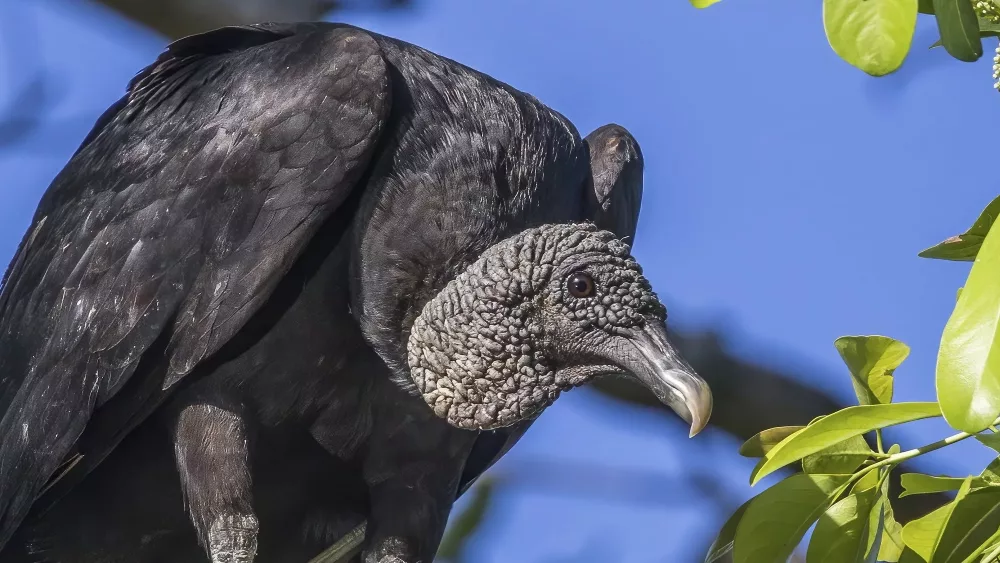
By KEVIN BESSLER
Illinois Radio Network
SPRINGFIELD, Ill. (IRN) — Illinois livestock farmers dealing with highly aggressive black vultures now have the means to fight back.
Black vultures are known to prey on young livestock and birthing mothers, causing injuries and sometimes death.
“Illinois’ black vulture population has increased significantly in recent years, particularly in the southern portion of the state,” said Illinois Farm Bureau president Brian Duncan. “These birds often prey on young livestock, especially in open pastures, and can create major financial losses for farmers.”
Black vultures, which have a dark gray head and are aggressive, should not be confused with their larger, less aggressive and red-headed relative, the turkey vulture. Turkey vultures may be found throughout Illinois.
The Illinois Farm Bureau secured statewide black vulture depredation permits through the U.S. Fish and Wildlife Service (USFWS) effective now through Dec. 31, 2025.
As migratory birds, black vultures are protected by the Migratory Bird Treaty Act, state laws and regulations, therefore, they can’t be killed or destroyed without a migratory bird depredation permit from USFWS and a Class B nuisance wildlife control permit from IDNR.
“Securing these federal depredation permits streamlines the application process and reduces cost to the producer. It is our hope that this process helps farmers access the necessary tools as quickly as possible to protect their livestock,” said Duncan.
Approved applicants will be allowed a maximum of three birds, determined after consultation with USDA Wildlife Services.
There are steps being taken at the federal level as well. Recently, the bipartisan Black Vulture Relief Act of 2025 was introduced in the U.S. House.
“Cattle producers across the South and Midwest face the emotional and financial strain of livestock deaths due to overabundant black vultures,” said National Cattlemen’s Beef Association Director of Government Affairs Garrett Edmonds. “The Migratory Bird Treaty Act has been overwhelmingly successful but makes it extremely difficult for producers to properly protect their cattle herds from these predators.”









